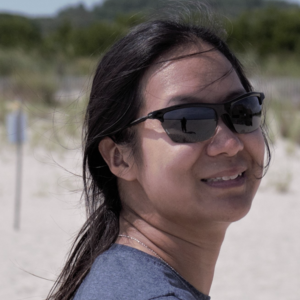
In my travels around the internet, I see a lot of folks who are interested in becoming an instructor of some type. Many, even most, are people excited about their skills, and in the self-defense space, they’re interested in passing it on to help others feel or be safe too. It’s an admirable impulse, and it’s important for more to follow through with it because we need to spread that knowledge so that our world can be a safer place regardless of how hard the bad guys try to get their way. However, teaching defense-related skills is a serious business and it’s important to know that taking a couple-day class and earning a certificate is only a start to becoming an effective teacher. You owe it yourself and to your students to do more before and while you call yourself an instructor because what you do in front of a classroom and as an example can be the difference between a thriving life and unnecessary injury or death. Whether you are just getting started or have already spent some time on your journey, there are several areas where you need to continually pay attention if you want to be more than someone with an empty title. Here are a few:
You must always be willing to be a student. Continuing education is an integral part of many professions and even though you teaching self-defense topics may be a hobby or side hustle with no licensing board governing what you need to do to keep your status, you should impose those requirements on yourself. On a regular basis, you should be taking classes at all levels, to review your knowledge, see how others are teaching similar material, and expand what you know. In addition, you should stay up to date on the current state of knowledge and technique in your field. You might do that by reading books or websites, listening to or watching podcasts and videos, and participating in discussions with other instructors and experts. Of course it’s important to vet your sources, but you can do some of that simply by consuming with skepticism and comparing new data against known good information. Finally, if you don’t have the answer to a student’s question, then ask a mentor or other resource. The shame is in pretending, not in not knowing.
Related, you need a deep knowledge base in the subject area you want to teach. It’s not enough to be at the level of your students or just one or two steps ahead of them. You need to know much, much more than what is in your curriculum. Without that detailed background, you won’t know what to include and what to omit, and you won’t be able to properly address the needs of students who are outside the norm that you have planned for. In the pistol world, for instance, an instructor needs familiarity with different kinds of handguns and different effective ways to grip and operate them because students might show up with a revolver instead of a semi-automatic or a double-action gun instead of a striker-fired option, and they might have hand size or strength issues that you will need to figure out how to work around. The ability to simplify and teach is grounded in having enough understanding of the core principles to be able to break them down and explain them in more than one way, and in having enough knowledge to pick and choose how best to do that for the student in front of you at that moment.
It’s not enough to know your field; you also need to have a strong understanding of adjacent subject areas so that you can appropriately contextualize what you want to teach. Skills can exist in isolation and be studied for the sake of mastering of them. Knowledge can simply be a matter of nerdiness, of wanting to know everything there is to know about a thing. However, for most of us, we want to teach something practical that can be used in the real world and when that is the case, then we need to keep in mind how what we teach fits in with the rest of a student’s life. The skill of shooting a gun is one thing, and it can be a lot of fun to chase speed and accuracy to ever-higher levels. For the student who is interested in using a gun for self-defense or home defense, however, an instructor also needs to understand how to teach the skill of living with a gun in everyday life and to guide the decision-making process that goes in to making the choice to using a gun against other living beings both in the abstract and under specific circumstances. If not, then the instructor needs to be familiar enough to know that they need to send the student to another source who can teach them those areas in order to best serve the student’s entire need.
Having that deep and wide background alone is still only a start. You also need to understand pedagogy – how people learn, and how you can teach them effectively, both in theory and in practice. It includes putting together lesson plans, presenting them in ways that your students can grasp in the moment and remember later, and adjusting through the problems that can arise in the classroom. Teaching is its own skill and it’s not reserved, as in the saying, for those who can’t do the thing. The very best instructors are both: they can perform competently, and they can show others how they are able to achieve the same. More, they can do that for students who are not like them, for students who have different preexisting knowledge, who have different bodies, and who have different life experiences. The mark of a good firearms instructor isn’t that they can teach a virtual clone how to shoot and how to make good decisions with a gun in hand, but that they can do so for someone they have little in common with. It requires both the skill of teaching and the empathy to apply those skills across demographics.
All of this comes back to understanding the gravity of what you want to teach, particularly in the self-defense space where we may be the difference between life and death. I come back to this theme often when it comes to evaluating instructors and experts, and it’s one that you need to remember when looking at yourself in the mirror. Screwing up might mean someone gets hurt in training under your eye. It might mean they are injured practicing on their own or living their everyday life. It might mean that they aren’t able to defend themselves effectively on their worst day. As an instructor, you will never be able to completely control the outcome for your students and even if you and they do everything right they could still get hurt or die, but you should still be striving to give them the best chance possible. Your job, should you choose to take it on and keep it, is to stack the odds in your students’ favor, and that means working to always bring them the very best in current and contextualized knowledge and skills, in ways that they are able to absorb and integrate into their lives.




